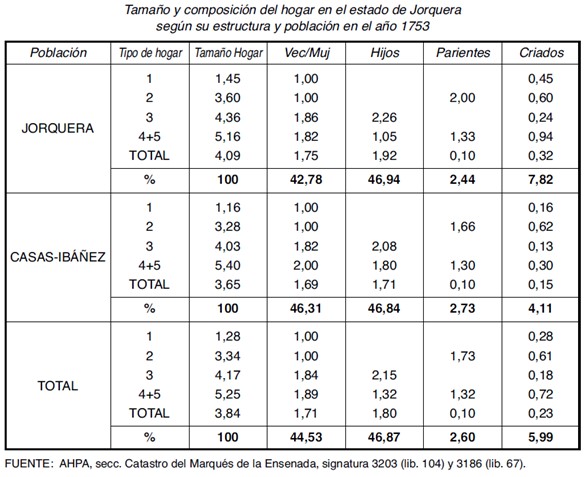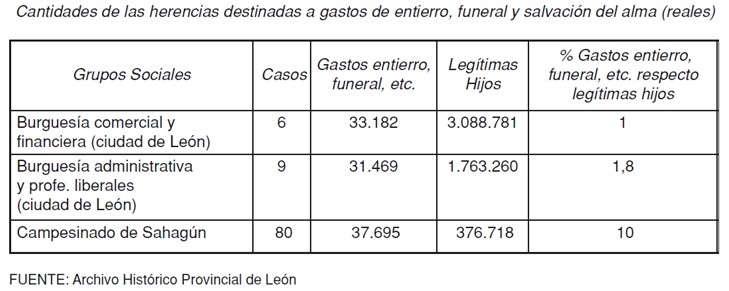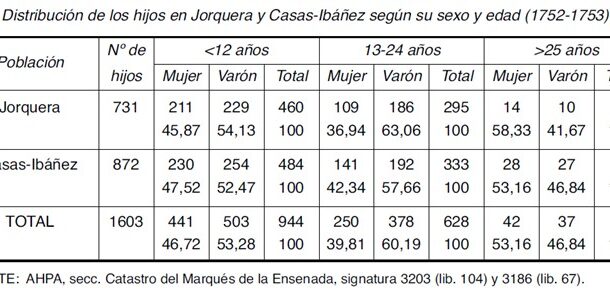
The marital status of the heads of household, regardless of their sex, is directly associated with the stage of the life cycle. In 1753, according to the Ensenada Cadastre, in the towns of Jorquera and Casas Ibáñez in Albacete, the majority of married people were between 25 and 34 years of age, with men and women entering marriage at an age close to the lower end of the range. Among the single heads of household, there is a majority female presence among young women under 25, while men stand out in the 25-34 age range. On the other hand, the highest number of widowers is found in the 55-64 age bracket, and decreases in the over 65 age bracket (due to remarriage); widows stand out in the same age bracket as men, however, there is a significantly higher figure in the 45-54 age bracket with 32.14% compared to 17.78% for men. In this way we can follow the life cycle of these municipalities of La Manchuela: within the group of young bachelors, men married a few years later than women, women were widowed earlier and tended to be single, while men tended to remarry from the age of 55 onwards.
Collection: Statistics
Project: 3. Rural world and urban world in the formation of the European identity., 4. Family, daily life and social inequality in Europe.
Chronology: XVIII
Scope: Secondary Education, Baccalaureate, University
Link: https://www.adeh.org/revista/2009,%202/MM%20SimA%CC%82%C2%A2n%20GarcA%CC%82%C2%B0a.pdf
Resource type: Statistics
Format: Table
Source: Simón García, María del Mar. (2009)."El hogar y su composición en la Mancha del Júcar a mediados del siglo XVIII", en Revista de Demografía Histórica, XXVII, 2, p. 165.
Language: Spanish
Date: 2009
Owner: Pablo Ballesta Fernández (Modernalia)
Copyright: ©Revista de Demografía Histórica ©María del Mar Simón García
Abstract: Table showing the division by marital status and sex of the age groups in areas of La Manchuela albacetense in 1753. The age cycle as part of social dynamics
Image
Tags







